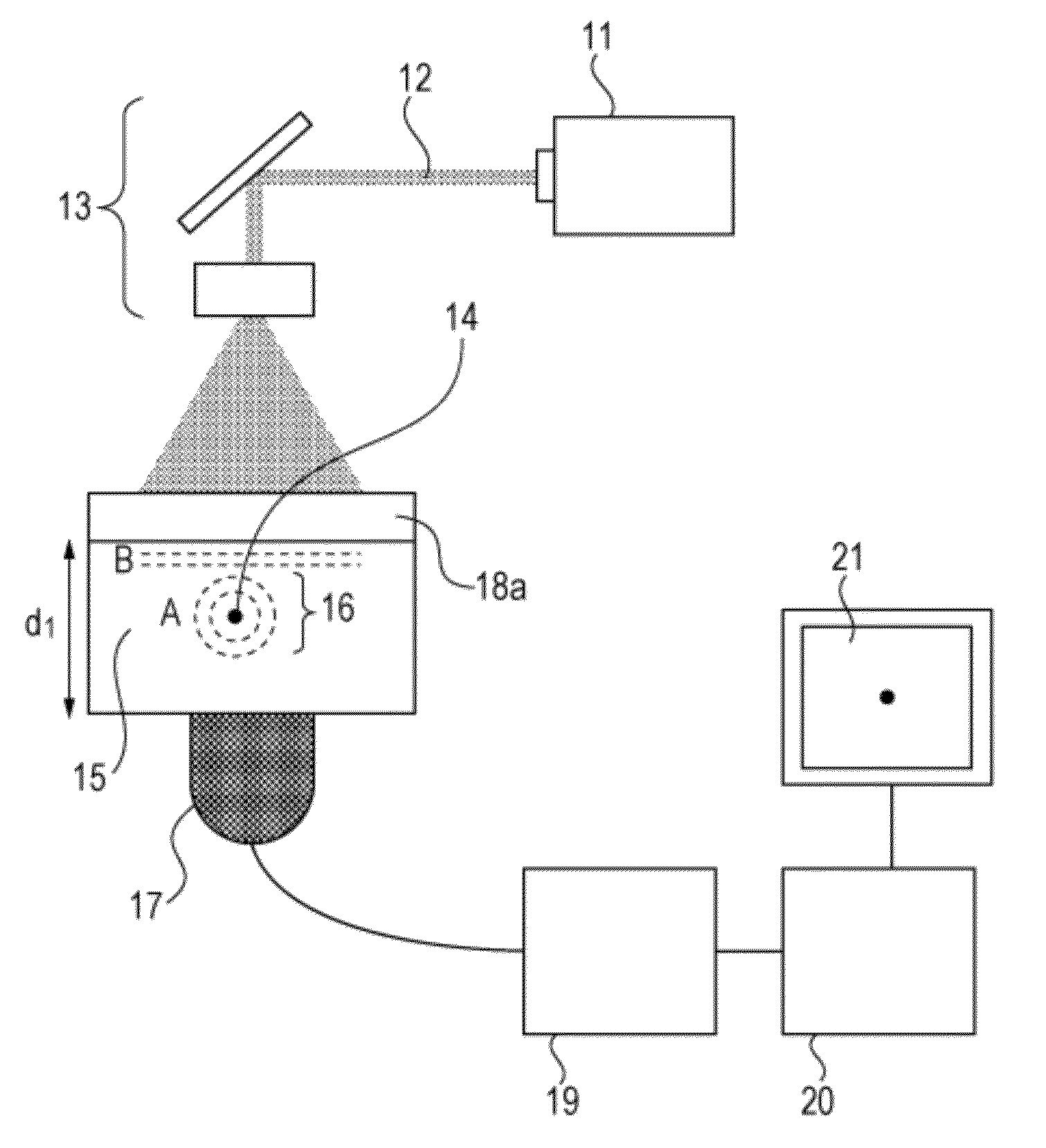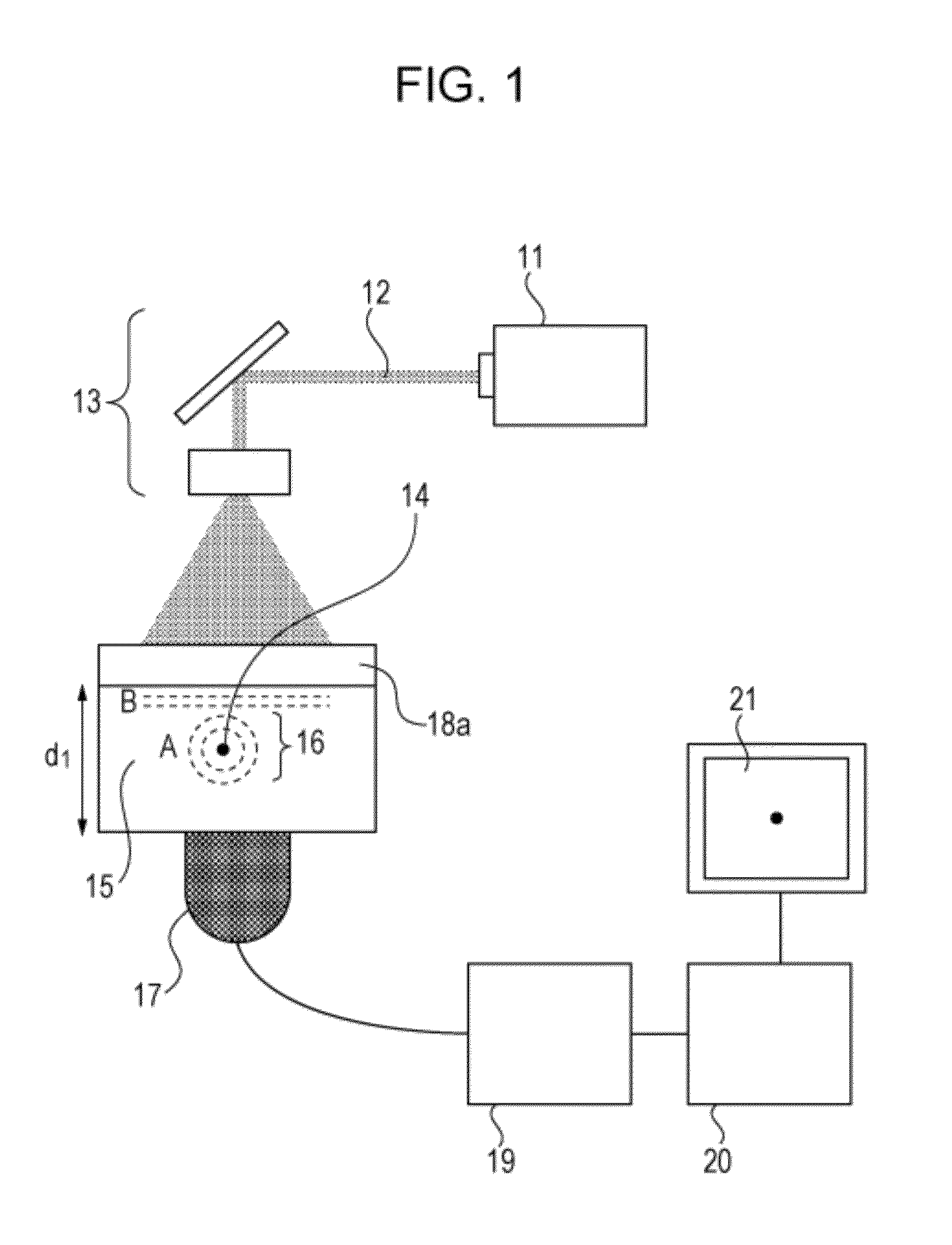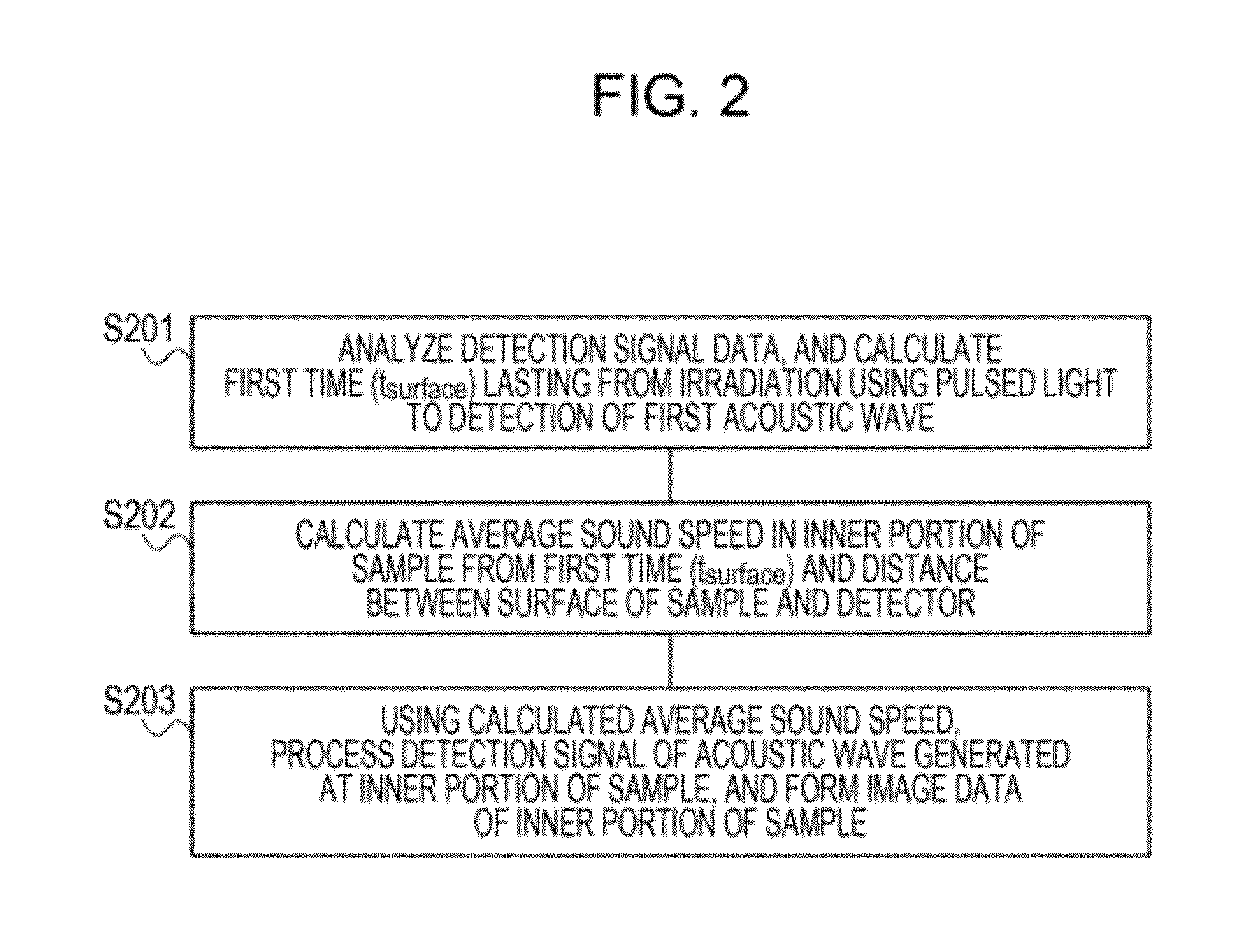Photoacoustic imaging apparatus and photoacoustic imaging method
- Summary
- Abstract
- Description
- Claims
- Application Information
AI Technical Summary
Benefits of technology
Problems solved by technology
Method used
Image
Examples
example 1
[0050]An exemplary imaging apparatus using photoacoustic tomography to which the embodiment is applied will be described using the schematic view of the apparatus shown in FIG. 1. In the example, as a light source 11, a Q switch YAG laser generating pulsed light of approximately 10 nanoseconds at a wavelength of 1064 nm was used. Energy of a light pulse emitted from pulsed laser light 12 was 0.6 J. Using an optical system 13, such as a mirror and a beam expander, the pulsed light was expanded to a radius of approximately 2 cm. A phantom or a simulation of a living body was used as a sample 15. For the phantom, 1% Intralipid with gelatin was used. The average sound speed in the phantom was a known value of 1512 m / sec. The size of the phantom was such that its width was 12 cm, its height was 8 cm, and its depth was 4 cm. As an optical absorber 14, a black rubber wire having a diameter of 0.03 cm was buried near the center in the phantom. As a result of interposing the phantom between ...
second embodiment
[0058]In the first embodiment, the average sound speed is calculated by using only the acoustic wave (first acoustic wave) generated from one location. In a second embodiment, the average sound speed is calculated by using acoustic waves generated at a plurality of surfaces of a sample. That is, the average sound speed is calculated from detection signals obtained from a first acoustic wave and a second acoustic wave generated at a surface of the sample that differs from the surface of the sample where the first acoustic wave is generated. This will hereunder be described on the basis of Example 2.
example 2
[0059]Example 2 in which, in an imaging apparatus using photoacoustic tomography, laser was used for irradiation from two directions will be described with reference to FIG. 5A. The basic structure of the imaging apparatus according to Example 2 was the same as that of the imaging apparatus according to Example 1 except that a sample 15 was interposed between two plates 18a and 18b, to regulate the size of the sample. That is, the size of the sample was regulated by controlling the interval between the plates. The thickness of each plate was 1 cm. The sample could be irradiated through the plate 18b from a side of a probe 17 and in a direction that is the same as that in Example 1. A phantom used was one having titanium oxide and ink mixed with urethane rubber. The size of the phantom was such that its width was 8 cm, its height was 8 cm, and its depth was 5 cm. An optical absorber having a columnar shape that was 0.5 cm in diameter and having a high absorption coefficient with resp...
PUM
 Login to View More
Login to View More Abstract
Description
Claims
Application Information
 Login to View More
Login to View More - R&D
- Intellectual Property
- Life Sciences
- Materials
- Tech Scout
- Unparalleled Data Quality
- Higher Quality Content
- 60% Fewer Hallucinations
Browse by: Latest US Patents, China's latest patents, Technical Efficacy Thesaurus, Application Domain, Technology Topic, Popular Technical Reports.
© 2025 PatSnap. All rights reserved.Legal|Privacy policy|Modern Slavery Act Transparency Statement|Sitemap|About US| Contact US: help@patsnap.com



